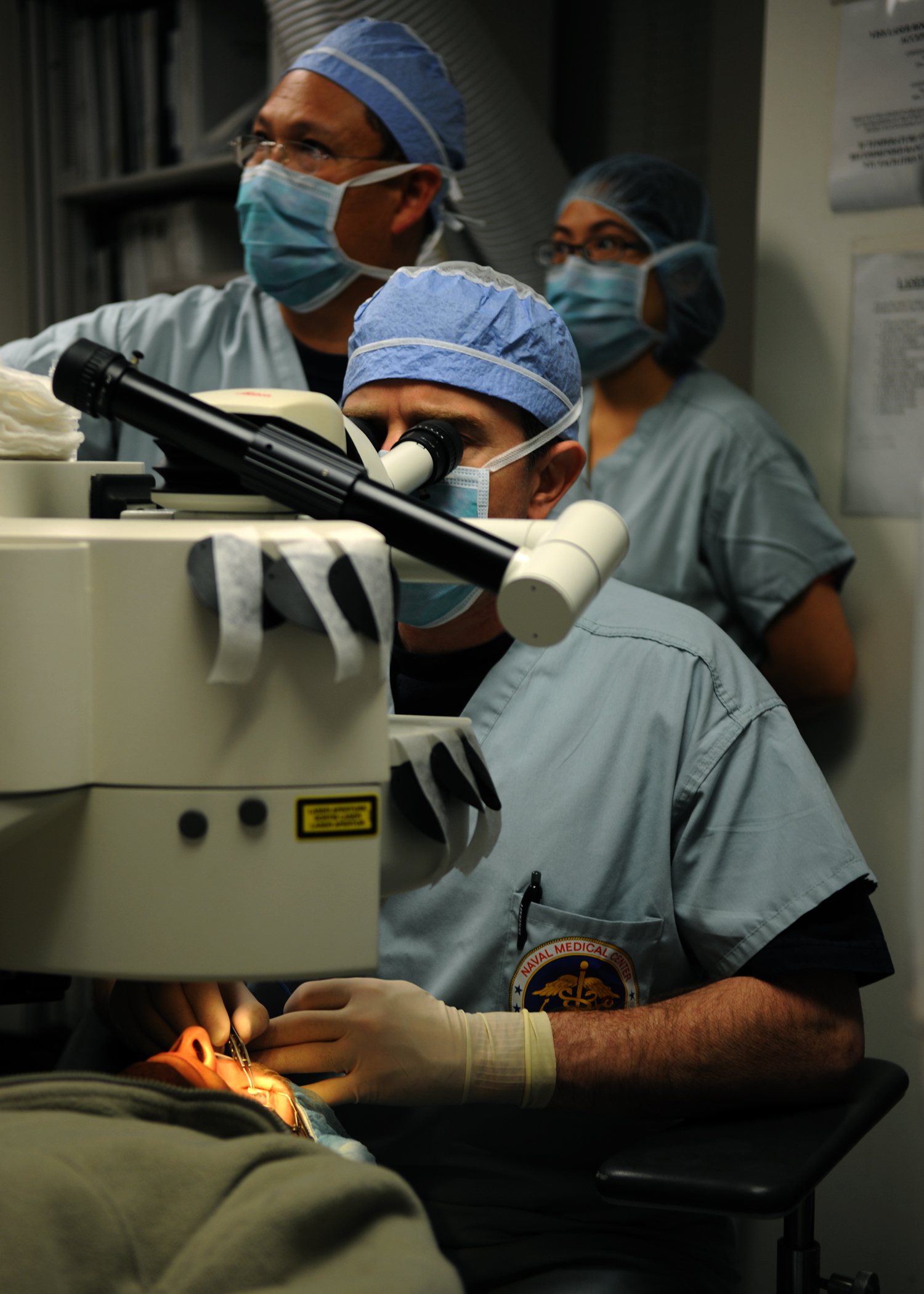
Refractive surgery
Refractive surgery is optional eye surgery used to improve the refractive state of the eye and decrease or eliminate dependency on glasses or contact lenses. This can include various methods of surgical remodeling of the cornea (keratomileusis), lens implantation or lens replacement. The most common methods today use excimer lasers to reshape the curvature of the cornea. Refractive eye surgeries are used to treat common vision disorders such as myopia, hyperopia, presbyopia and astigmatism.
Refractive surgery
Expectations[edit]
Research conducted by the Magill Research Center for Vision Correction, Medical University of South Carolina, showed that the overall patient satisfaction rate after primary LASIK surgery was 95.4%. They further differentiated between myopic LASIK (95.3%) and hyperopic LASIK (96.3%). They concluded that the vast majority (95.4%) of patients were satisfied with their outcome after LASIK surgery.[20]
Ophthalmologists use various approaches to analyze the results of refractive surgery, and alter their techniques to provide better results in the future.[21][22][23][24][25][26][27][28][29] Some of these approaches are programmed into the devices ophthalmologists use to measure the refraction of the eye and the shape of the cornea, such as corneal topography.[30]
Risks[edit]
While refractive surgery is becoming more affordable and safe, it may not be recommended for everybody. People with certain eye diseases involving the cornea or retina, pregnant women, and patients who have medical conditions such as glaucoma, diabetes, uncontrolled vascular disease, or autoimmune disease are not good candidates for refractive surgery. Keratoconus, a progressive thinning of the cornea, is a common corneal disorder. Keratoconus occurring after refractive surgery is called Corneal Ectasia. It is believed that additional thinning of the cornea via refractive surgery may contribute to advancement of the disease[31] that may lead to the need for a corneal transplant. Therefore, keratoconus is a contraindication to refractive surgery. Corneal topography and pachymetry are used to screen for abnormal corneas. Furthermore, some people's eye shape may not permit effective refractive surgery without removing excessive amounts of corneal tissue. Those considering laser eye surgery should have a full eye examination.
Although the risk of complications is decreasing compared to the early days of refractive surgery,[32] there is still a small chance for serious problems. These include vision problems such as ghosting, halos, starbursts, double-vision, and dry-eye syndrome.[33] With procedures that create a permanent flap in the cornea (such as LASIK), there is also the possibility of accidental traumatic flap displacement years after the surgery,[34] with potentially disastrous results if not given prompt medical attention.[35]
For patients with strabismus, risks of complications such as diplopia and/or increased strabismus angle need to be evaluated carefully. In case both refractive surgery and strabismus surgery are to be performed, it is recommended that the refractive surgery be done first.[36]
Children[edit]
Pediatric refractive surgery involves other risks than refractive surgery on adults, yet it may be indicated especially for children whose cognitive or visual development is failing due to refractive error,[37] in particular in cases of bilateral high refractive error,[38] anisometropia,[39] anisometric amblyopia[38][40] or accommodative esotropia.[39][41]
Interventions on young children may require general anaesthesia in order to avoid risks due to involuntary movement, and children have a higher risk of rubbing or manipulating their eyes post-surgically. Changes to refractive error occurring during normal age development need to be accounted for, and children have a higher risk of developing postoperative corneal haze.[42][43] This risk is particularly relevant with relation to myopic children.[44]
One study evaluated the outcome of LASEK interventions on 53 children aged 10 months to 16 years who had anisometropic amblyopia. The choice of LASEK was made as it was felt it would give fewer complications than LASIK and less post-operative pain than PRK. In the intervention, which was performed under general anaesthesia, the refractive error in the weaker eye was corrected to balance the refractive error of the other eye. Strabismus surgery was performed later if required. After one year, over 60% had improved in best corrected visual acuity (BCVA) in the weaker eye. Notably, over 80% showed stereopsis post-operatively whereas less than 40% had showed stereopsis before.[45]
In addition to corneal refractive procedures (LASIK, PRK and LASEK), intraocular refractive procedures (phakic intraocular lenses, refractive lens exchange and clear lens extraction) are also performed on children.[46]